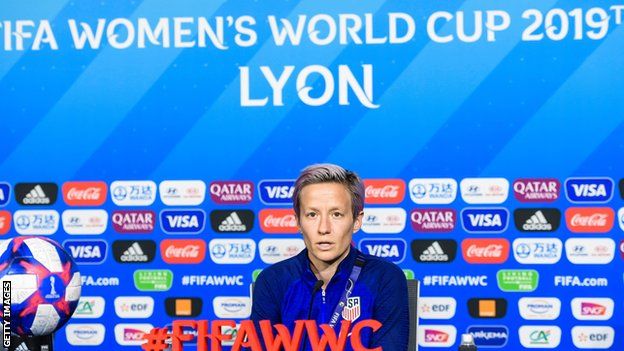“U.S.A! U.S.A!” Those were the cheers bestowed on Team USA as they celebrated defeating The Netherlands 2-0 to win their second consecutive World Cup, and fourth overall. It was a historic run through this most prestigious of tournaments.
What history did this team make?
Team USA never trailed in any of their matches.
Team USA scored the most goals in World Cup history. Twenty six, in fact.
Team USA’s score differential was the largest in FIFA World Cup history.
It was a dominant performance from this veteran group, and their standing atop the soccer world is unprecedented and unchallenged. Bravo, enjoy your ticker tape parade in New York City. Now, another fight looms.
More of a fight than winning in France?
Bigger in one respect, anyway. The U.S. Women’s National Team players made a bonus of $37,500 for making the World Cup roster. Add $3,000 for each qualification game they win, and that’s $15,000 for winning all five. They got $37,500 for making the World Cup Final, and then $110,000 for winning the World Cup. All in all, the 23 members of Team USA earned about $250,000 each for winning the FIFA World Cup. That’s a payday that could buy a modest home.
The U.S. Men’s team, non-qualifiers for last year’s World Cup, would each earn almost $1.2 million per if they had won the FIFA World Cup. That’s a payday that could buy a modest island.
Then it is a no-brainer. The women’s team is better and deserves at least as much of the pie as the men. Who could argue with that?
USWNT superstar Megan Rapinoe agrees with you. Here is what she had to say.
“It certainly is not fair. We should double it now and use that number to double it or quadruple it for the next time. That’s what I mean when we talk about, ‘Do we feel respected?’

Megan Rapinoe speaks on gender pay inequality.
But, others say it isn’t that cut and dried, and they have numbers of their own to back up the claims. There’s the matter of the difference in the revenue drawn by the men’s game versus the women’s game. The Women’s World Cup brought in almost $73 million. The players received 13% in salaries and bonuses. The 2010 men’s World Cup made nearly $4 billion, and nine percent went to the players.
For all of the justifiable pride America has in the USWNT, the men’s game still pulls the money wagon. That may be a barrier to equal pay that won’t be overcome anytime soon. It is why the WNBA pays a pittance to their players, while NBA players bathe in pink champagne, and fly private jets to the grocery store.
So, what is the answer?
There isn’t an easy one. For sure, the women who make up the World Cup team deserves more money. Maybe the answer is found in renewed efforts to publicize the women’s game domestically. Major League Soccer fills stadiums and draws viewership to the men’s game, and MLS is flourishing. The female version, known as the National Women’s Soccer League, plays before half-empty stadiums and not a TV camera in sight.
Maybe the success of Team USA can change that.
Gildshire hopes it can because pay inequality between the genders is a problem here and everywhere.




